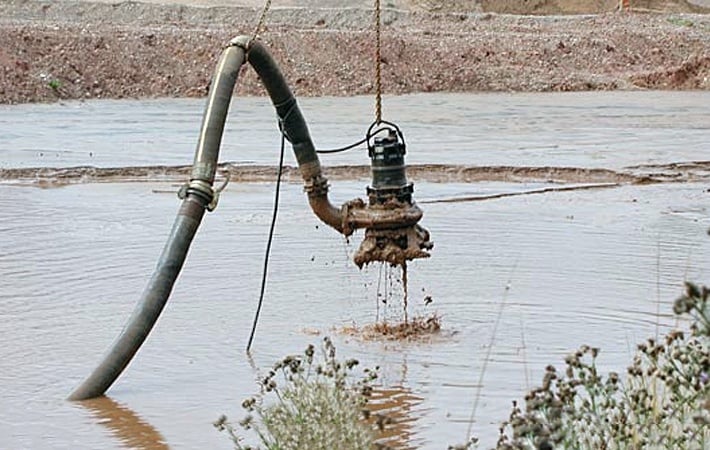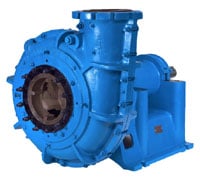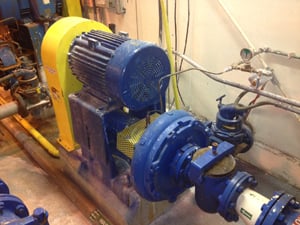
If you've ever pumped slurry, you know that it can be one of the most challenging fluids to move. It's abrasive, thick, sometimes corrosive, and contains high amounts of solids. No doubt about it, slurry is tough on pumps. But the more you understand about what you're pumping, the better your pump selection becomes, setting you up for longer mean time between failure.
Slurry is any mixture of fluid, like water, and a pulverized solid. Slurries are used as a convenient way to handle solids in bulk in mining, steel processing, foundries, power generation, and most recently, the Frac Sand mining industry. Slurries generally behave the same way as thick, viscous fluids, flowing under gravity, but also pumped as needed.
Slurries are divided into two general categories: non-settling or settling. Non-settling slurries consist of very fine particles, which give the illusion of increased apparent viscosity. These slurries usually have low wearing properties, but do require very careful consideration when selecting the right pump because they do not behave in the same manner as a normal liquid does.
Settling slurries are formed by coarse particles that tend to form an unstable mixture. Particular attention should be given to flow and power calculations when selecting a pump. The majority of slurry applications are made up of coarse particles and because of this, have higher wear properties.
Below are common characteristics of slurries:

Selecting the right pump for slurries is critical to get the most bang for your buck. Basic pump components, such as the impeller size and design, material of construction, and discharge configurations must be considered to ensure the pump will hold up against the wear caused by an abrasive slurry. Slurry pumps are generally larger in size when compared to low-viscosity liquid pumps and usually require more horsepower to operate because they're less efficient. Bearings and shafts must be more rugged and rigid as well.
Many types of pumps are used for pumping slurries, but the most common slurry pump is the centrifugal pump (pictured above). The centrifugal slurry pump uses the centrifugal force generated by a rotating impeller to impact kinetic energy to the slurry, similar to how a water-like liquid would move through a standard centrifugal pump.
 SLURRY PUMPING CONSIDERATIONS
SLURRY PUMPING CONSIDERATIONSIf you have experience pumping slurries, you know it's not an easy task. Slurries are heavy and difficult to pump. They cause excessive wear on pumps and their components and are known to clog suction and discharge lines if not moving fast enough. Most importantly, it’s a challenge to make slurry pumps last for a reasonable amount of time. But, there are a few things you can do to extend the life of your slurry pump and make pumping slurry less of a challenge.
Pumping slurries poses several challenges and problems, but with proper engineering and equipment selection you can experience many years of worry-free operation. It's important to work with a qualified engineer when selecting a slurry pump because slurries can wreak havoc on a pump if not properly selected.
Check out the Must-Have Handbook for Centrifugal Pumps for more information on centrifugal pumps, including details about pumps specifically designed for slurry applications!
These Stories on Pumps
707 Ford Street
Kimberly, WI 54136
920-733-4425
12265 Nicollet Avenue
Burnsville, MN 55337
800-776-4425
© Copyright 2020. Crane Engineering. All Rights Reserved. Privacy Policy.